Imagine a world where saber-toothed cats weren’t just one kind of fierce feline—there were dozens, prowling continents and hunting in ways that would make even today’s lions look tame. What’s truly mind-blowing? These saber-toothed wonders didn’t come from one family tree. Across millions of years, on different continents, at least ten major types of saber-toothed cats evolved their iconic fangs all on their own. Curious to meet these wild, toothy legends? Let’s take a visual stroll through their stunning diversity—some you’ll recognize, and others might just surprise you!
Smilodon: The Superstar Saber-Tooth
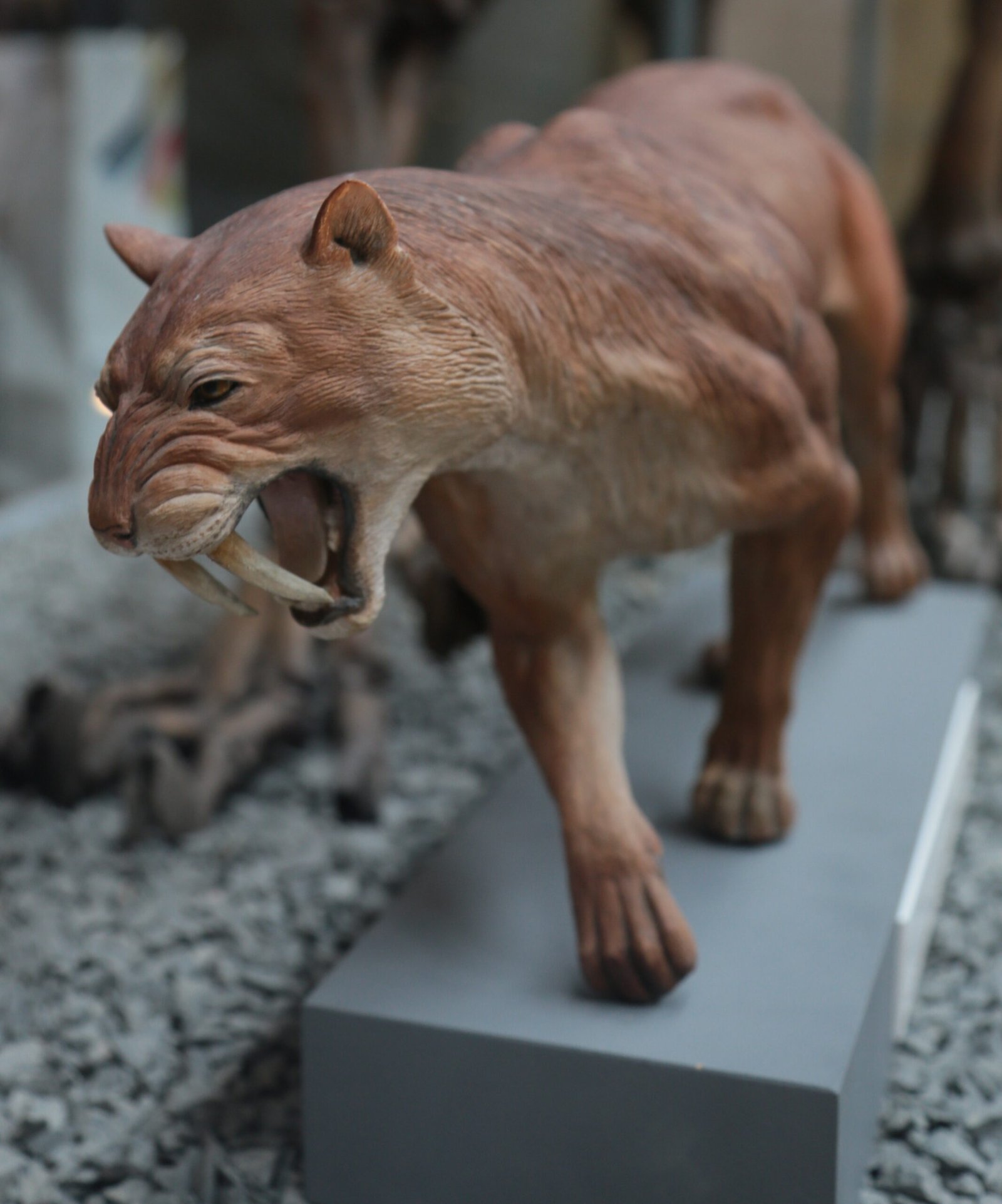
Smilodon is the celebrity of the saber-toothed world, often called the “saber-toothed tiger” (even though it’s not a tiger at all). Living in North and South America, these cats had jaw-dropping 11-inch fangs that could pierce the thickest hides. Smilodon was muscular and built for ambush, using sheer strength to take down large prey like bison and even mammoths. Fossil evidence shows they hunted in packs, which is pretty unusual for cats. Imagine a pride of super-strong, saber-toothed lions! Despite their fame, Smilodon’s teeth were surprisingly fragile, so they delivered precision bites instead of wild chomps. If you ever wanted a prehistoric cat with both brawn and brains, Smilodon would be your pick.
Homotherium: The Scimitar Cat with a Twist
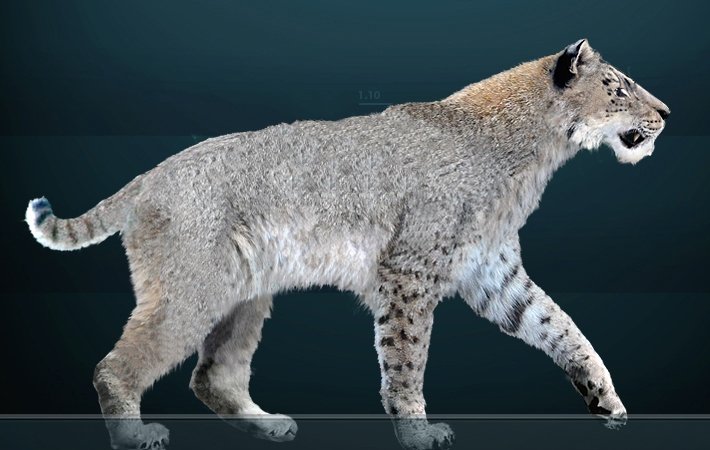
Homotherium, sometimes called the “scimitar cat,” wasn’t just about long teeth—it had shorter, curved fangs that looked almost like swords. These cats lived in Europe, Asia, Africa, and the Americas, showing just how adaptable they were. Unlike most saber-tooths, Homotherium had long legs built for running, hinting at a life spent chasing after prey on open plains. Their upper canines were serrated, almost like steak knives, making slicing through flesh a breeze. With a sloping back and a bear-like stance, Homotherium looked as odd as it was effective. If you picture a cheetah with a saber-tooth makeover, you’re not far off!
Megantereon: The Worldwide Wanderer
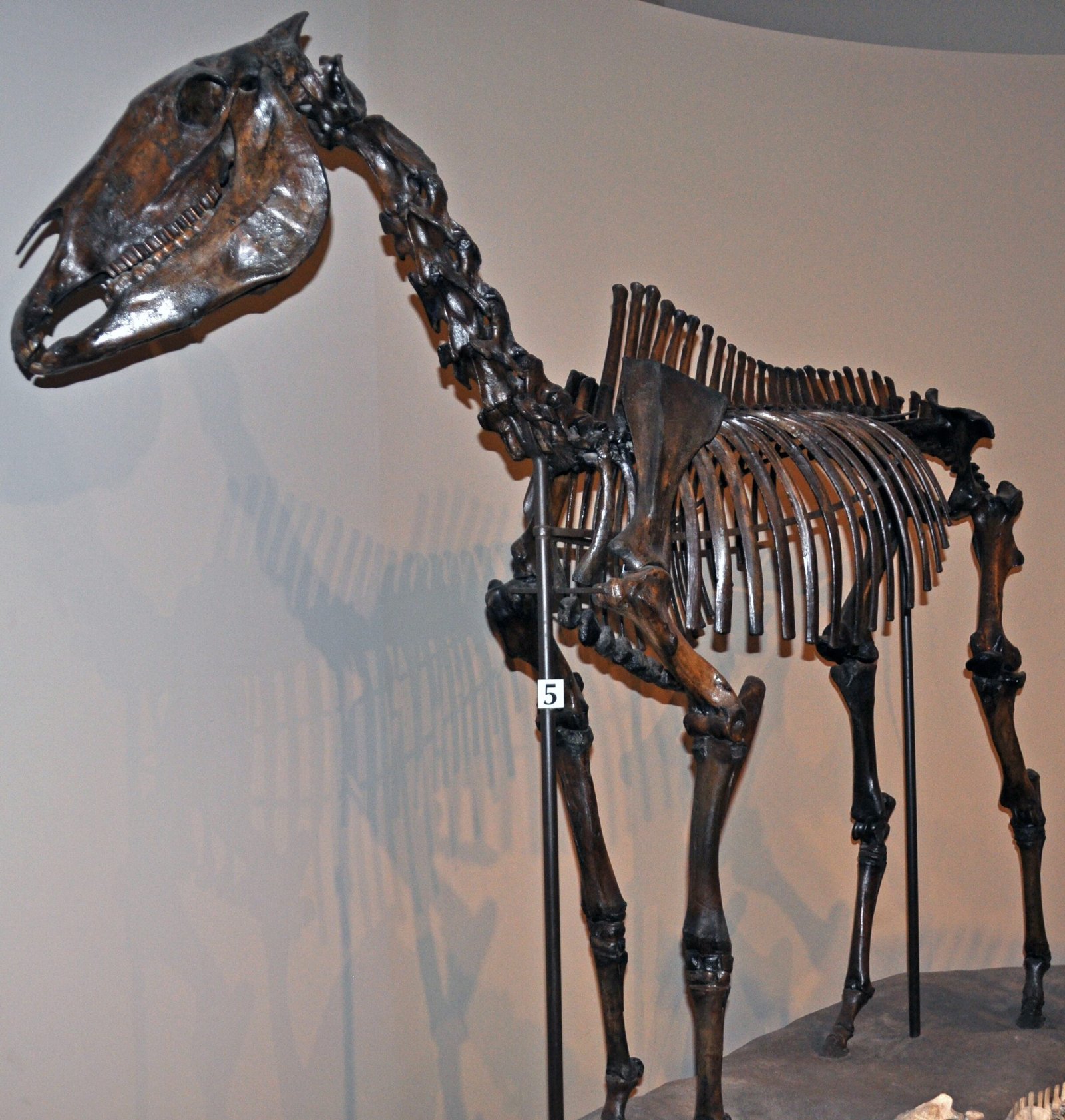
Megantereon might just win the award for “Most Well-Traveled Saber-Tooth.” This cat’s fossils have been found in Africa, Eurasia, and North America, proving it was a true globe-trotter. Megantereon’s fangs weren’t as extravagantly long as Smilodon’s, but they were sharp and strong enough to get the job done. These cats had powerful forelimbs, perfect for pinning down struggling prey. Some paleontologists think Megantereon was a solitary hunter, using stealth and surprise rather than speed or numbers. Its widespread success shows saber-teeth were a winning formula, no matter where you roamed.
Thylacosmilus: The Marsupial Saber-Tooth
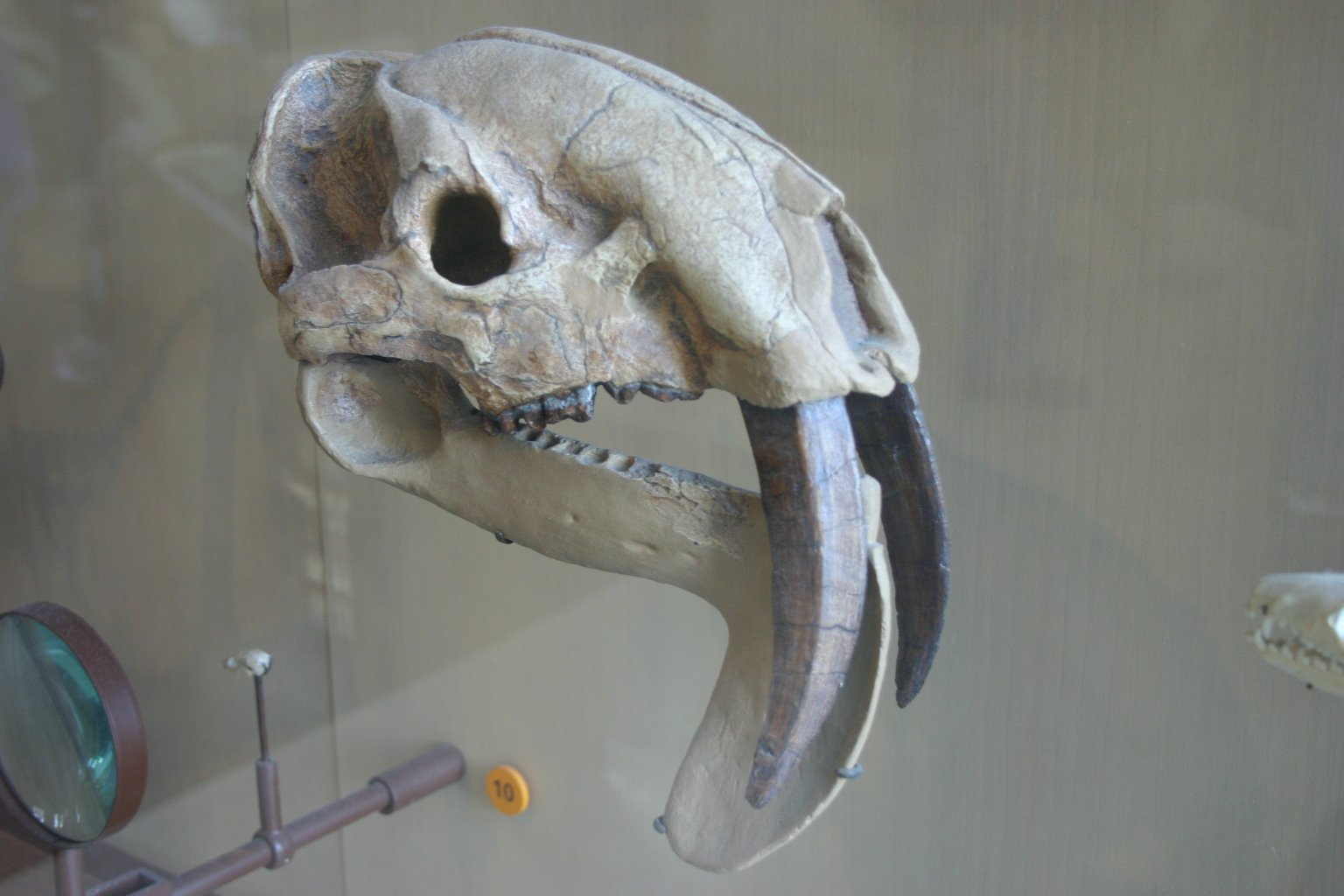
Here’s a twist: Thylacosmilus wasn’t even a cat! This saber-tooth lived in South America and was actually a marsupial, related more to kangaroos than lions. Its saber-teeth were so long they extended past its jaw, and it had special bony flanges to protect them—almost like built-in sheaths. Thylacosmilus probably hunted slow-moving prey, using its massive canines to pierce deeply. Despite its cat-like appearance, its skull and jaw worked very differently from true cats. It’s a wild reminder that nature sometimes likes to play dress-up, evolving the same look in totally unrelated animals.
Barbourofelis: The Bear-Cat Bruiser
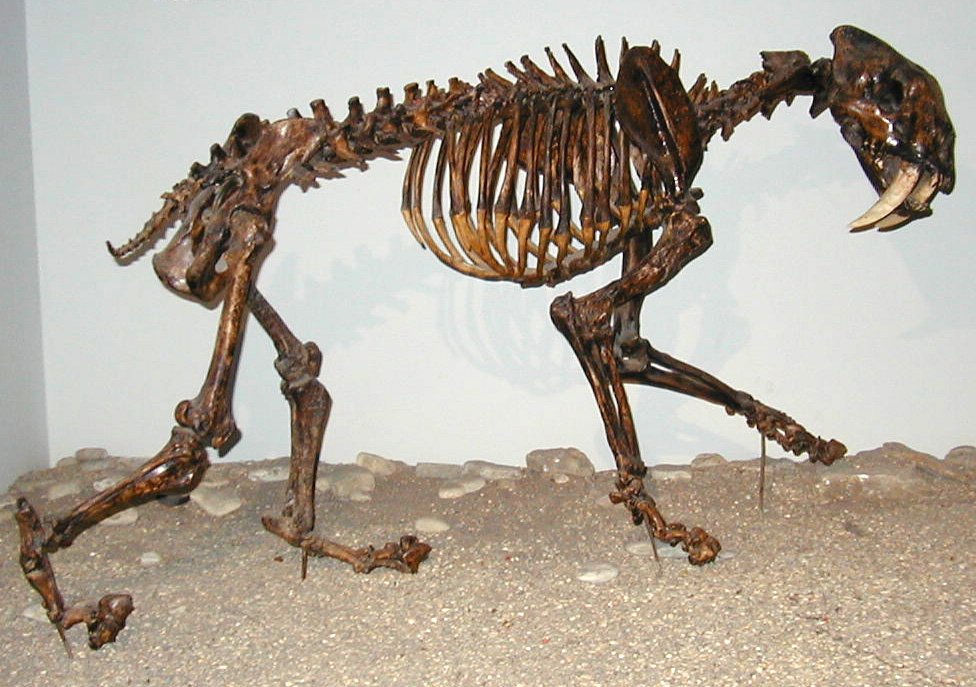
Barbourofelis was a saber-toothed cat that looked like it crossed paths with a bear. Stocky, muscular, and with a broad, heavy skull, Barbourofelis was all about power. Its fangs were flattened and dagger-like, perfect for stabbing. Living in North America during the Miocene, it likely ambushed large prey, relying on brute force to hold them down. Its paws were huge, with retractable claws for extra grip. Unlike some saber-tooths, Barbourofelis probably didn’t chase—it waited, pounced, and overpowered. If you want a saber-toothed cat that could arm wrestle a grizzly, this is your champion.
Machairodus: The First Saber-Tooth Superstar
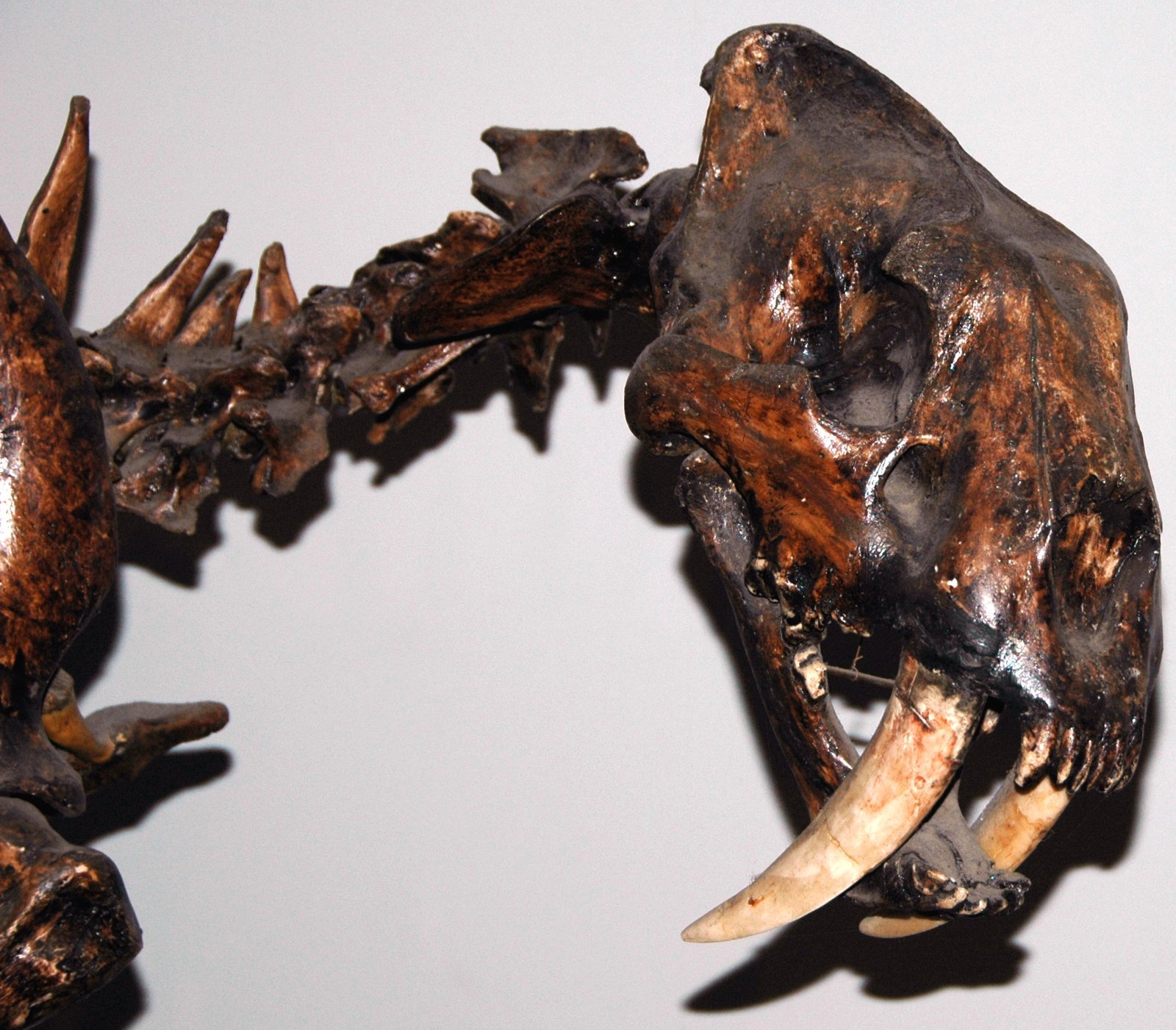
Machairodus is one of the earliest and most iconic saber-toothed cats, strutting its stuff across Africa, Eurasia, and North America. It had long, curved upper canines and a surprisingly short, robust jaw. Machairodus was a trendsetter—the “original” saber-tooth—showing up in the fossil record before most of its famous cousins. Its build was sleek but strong, hinting at a mix of speed and stealth. With a head built for delivering killing bites, Machairodus paved the way for all the saber-toothed cats that followed. Think of it as the rockstar ancestor that started a whole new genre of predators.
Xenosmilus: The Cookie-Cutter Cat
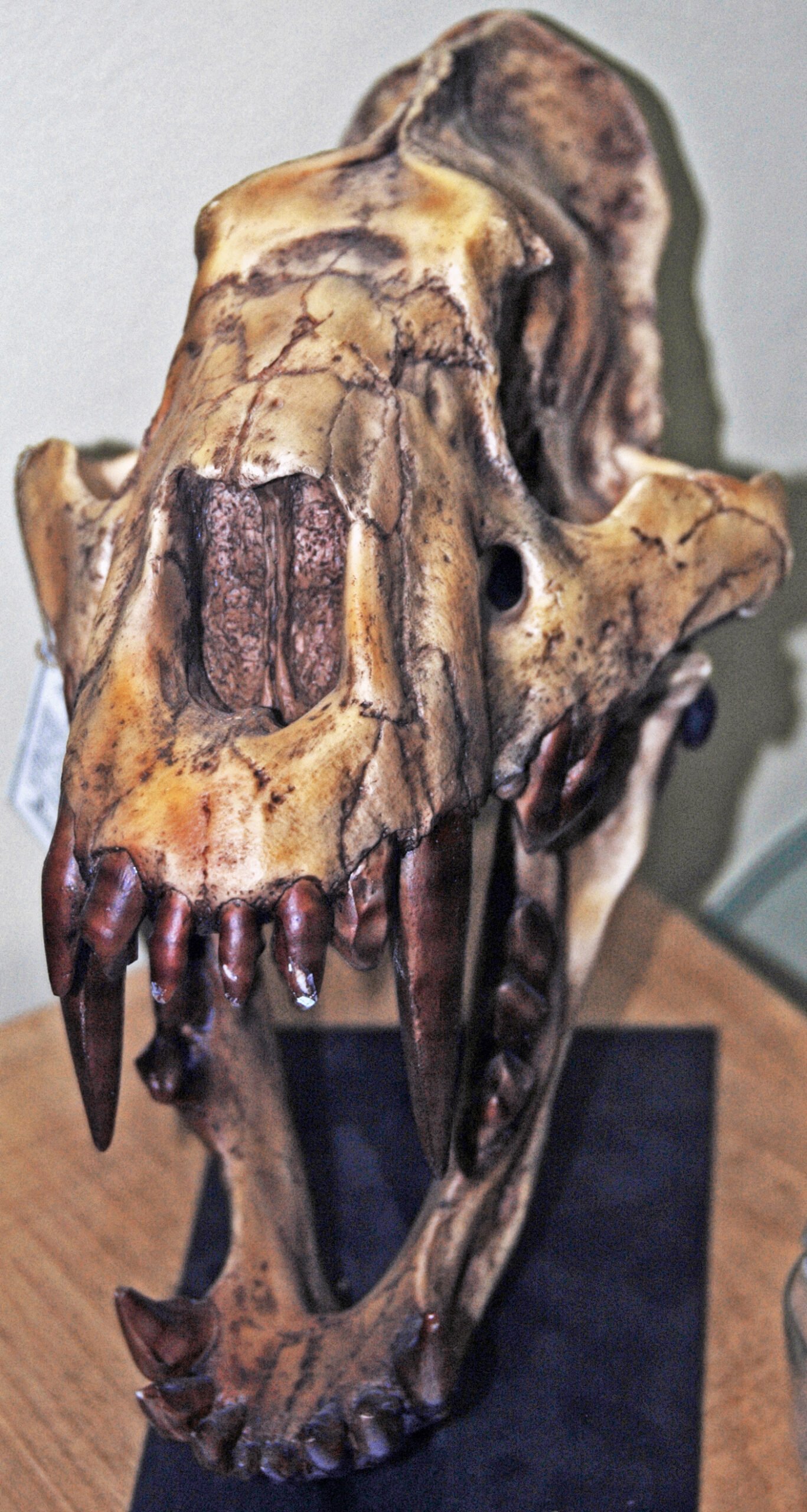
Xenosmilus took saber-toothed hunting to a new level with its unique, “cookie-cutter” bite. Instead of super-long fangs, it had shorter, ultra-sharp canines paired with massive, serrated teeth. This combo let Xenosmilus slice through flesh and bone in a single chomp—almost like a prehistoric food processor. Found in Florida, this cat was stocky and muscular, clearly built for wrestling big prey. Fossils show it targeted giant peccaries, leaving behind skeletons with telltale bite marks. If you imagine a saber-toothed cat designed by a chef, Xenosmilus would be it—a meat-slicing machine!
Paramachairodus: The Saber-Tooth in Miniature
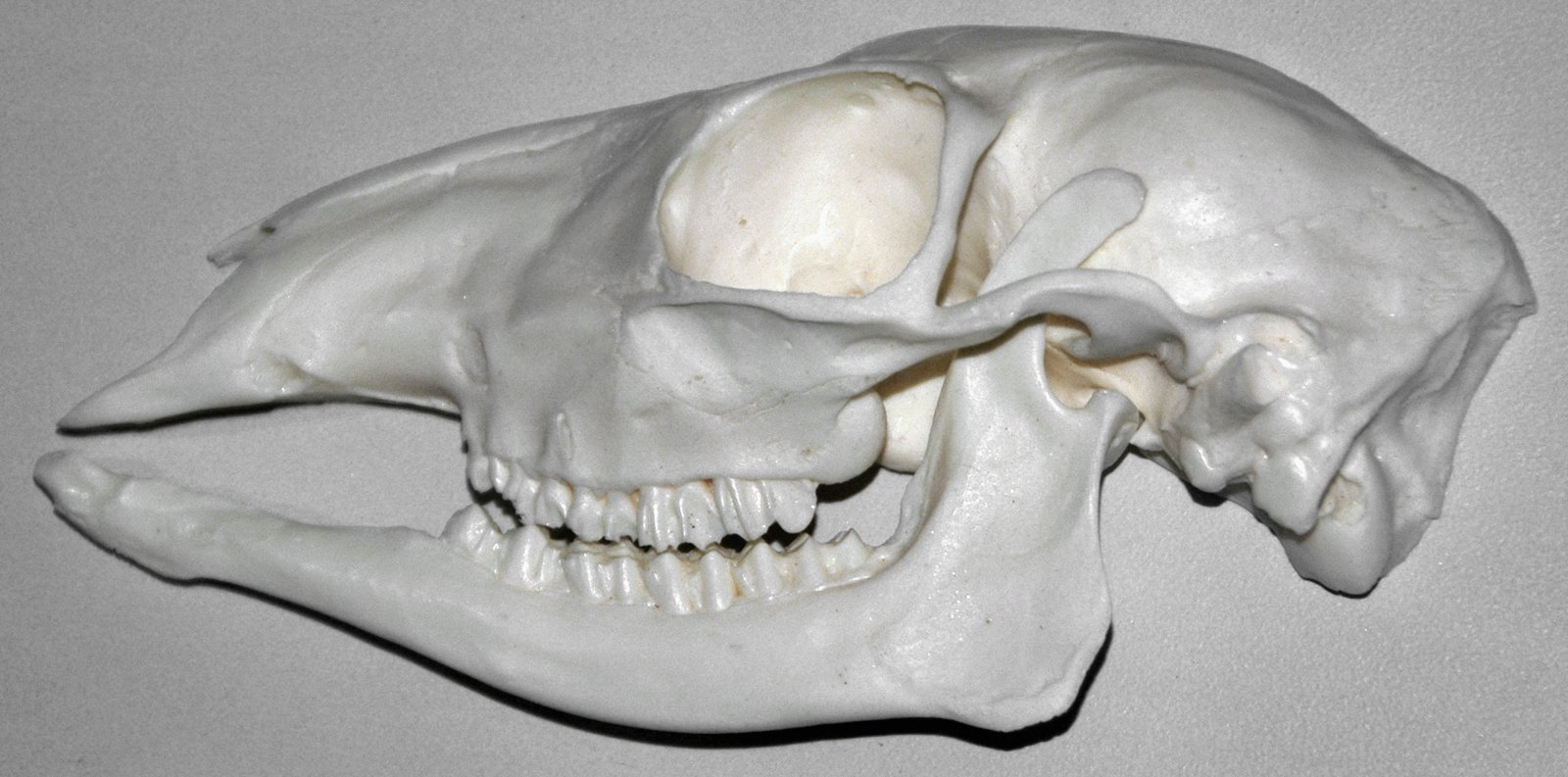
Paramachairodus proves that being fierce doesn’t always mean being huge. This smaller saber-toothed cat lived in Europe and Asia and sported elegant, elongated upper canines. Its build was slim and nimble, more like a modern-day leopard than a bear. Despite its size, Paramachairodus was a skilled hunter, likely using surprise and agility to tackle prey. Some scientists think it might have even climbed trees to ambush from above. Tiny but terrifying, Paramachairodus is a reminder that saber-teeth came in all shapes and sizes—and danger doesn’t always roar the loudest.
Dinofelis: The False Saber-Tooth

Dinofelis, sometimes called the “false saber-tooth,” had fangs that were impressive, but not quite as exaggerated as its cousins. It lived in Africa, Europe, Asia, and North America, and walked the earth alongside early humans. Dinofelis likely ambushed prey from cover, using its slightly elongated canines to deliver quick, lethal bites. Fossil sites often show baboon and antelope bones nearby, suggesting Dinofelis was an opportunist, taking whatever it could get. Its name means “terrible cat,” but really, Dinofelis was a master at blending in and waiting for the perfect moment to strike.
Lokotunjailurus: The Saber-Tooth from the Savannah
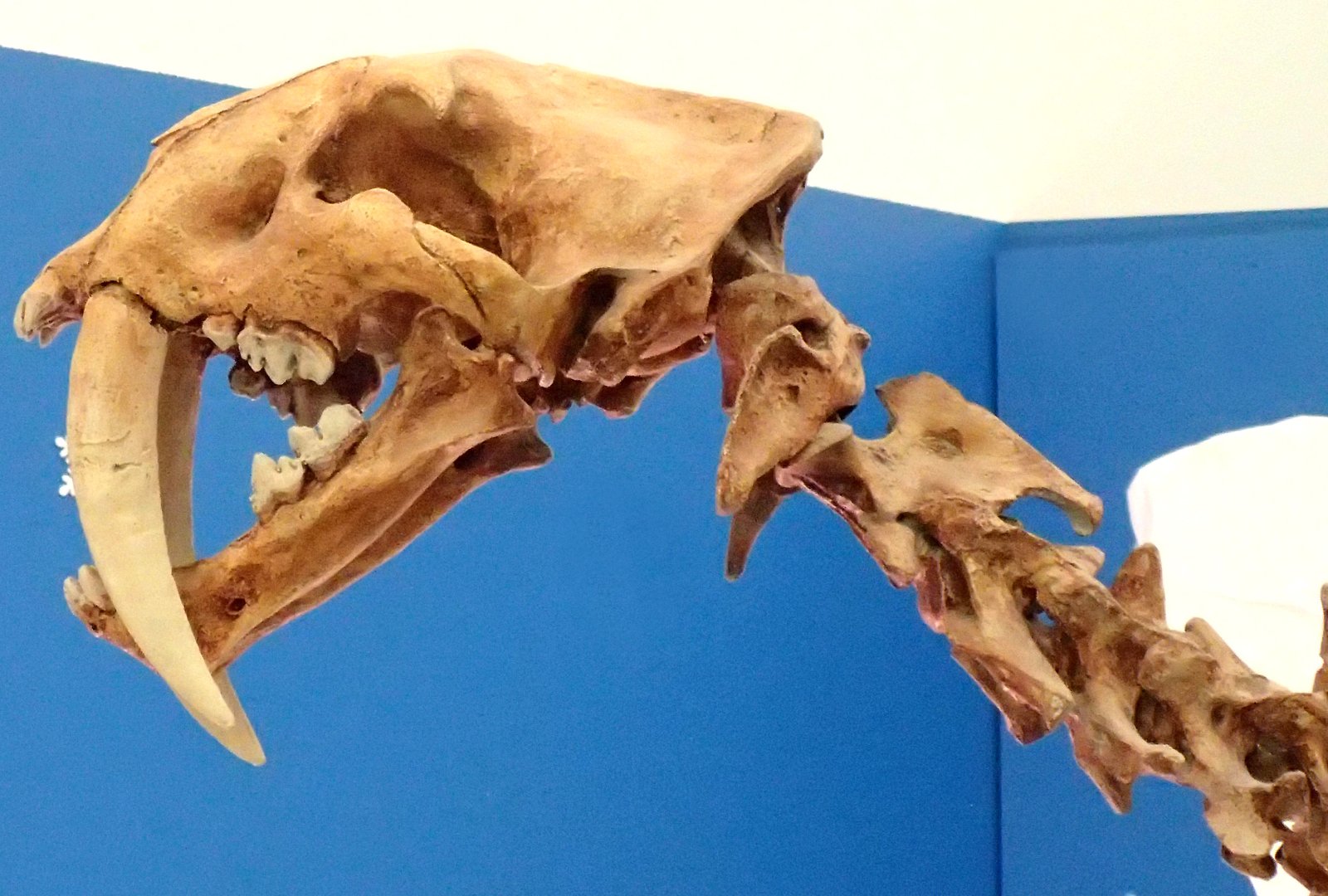
Lokotunjailurus might not be a household name, but this saber-toothed cat ruled the ancient African savannahs. It had moderately long, flattened canines and a streamlined build for stalking through grasslands. Fossils suggest Lokotunjailurus was agile, with long legs and a flexible spine—perfect for sneaking up on unsuspecting prey. Its teeth were sharp, but not as showy as Smilodon’s, hinting at a more subtle hunting style. This cat likely relied on a combination of patience and precision, proving that sometimes, the best hunters are the ones you never see coming.
Amphimachairodus: The Asian Giant
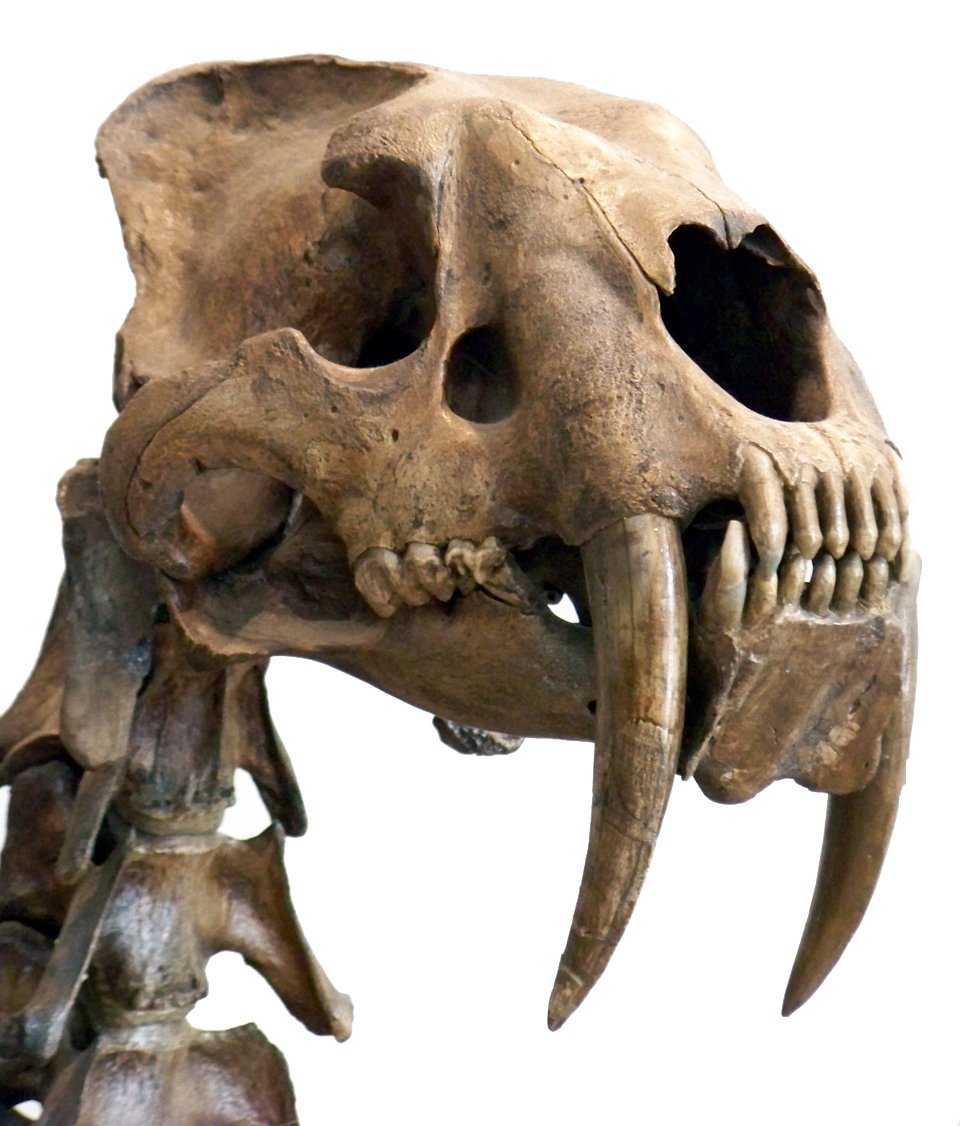
Amphimachairodus was a true heavyweight among saber-toothed cats, roaming the vast plains of Eurasia. With a body size rivaling modern tigers and impressively long saber teeth, this cat was a top predator in its ecosystem. Its jaws were built for delivering crushing bites, and its robust limbs suggest it could bring down large prey like ancient horses and camels. Amphimachairodus’s presence in Asia shows just how far saber-tooth evolution could go, adapting to new continents and challenges. Imagine a tiger with a vampire makeover and you’ll get the idea!
Metailurus: The Saber-Tooth with a Secret
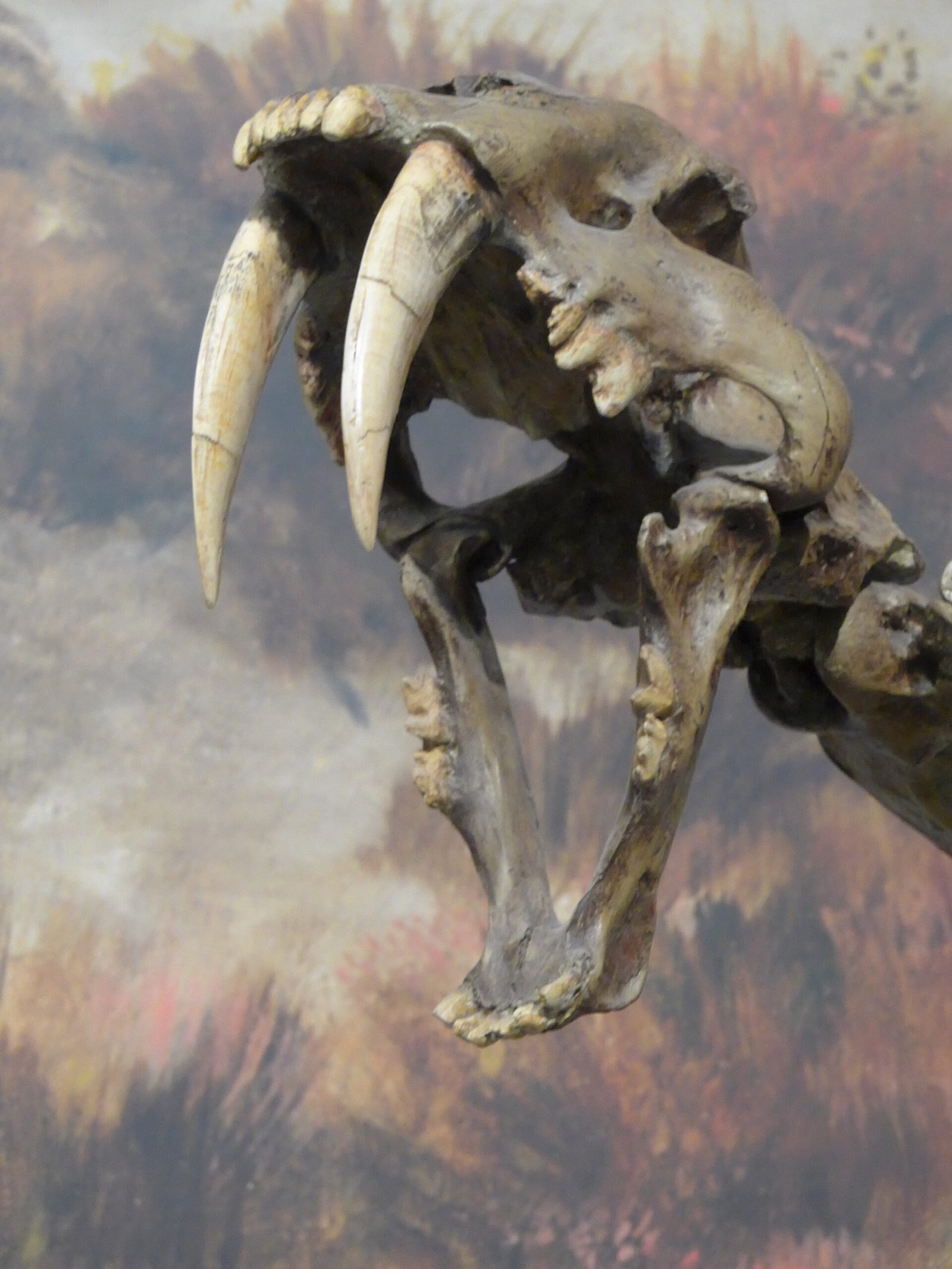
Metailurus stands out for its relatively short, robust saber teeth—almost like it was keeping its weapons hidden. This cat lived in Eurasia and Africa and may have been a tree-climber, using its strong forelimbs to scale trunks in search of prey. Its teeth, while not the longest, were perfectly shaped for quick, deep stabs. Metailurus’s secret weapon was versatility: it could hunt on the ground or from above, making it a nightmare for prey trying to escape. With a mysterious, stealthy edge, Metailurus reminds us that sometimes, the most dangerous predators are the ones you don’t see until it’s too late.
Machairodus giganteus: The Giant Saber-Tooth
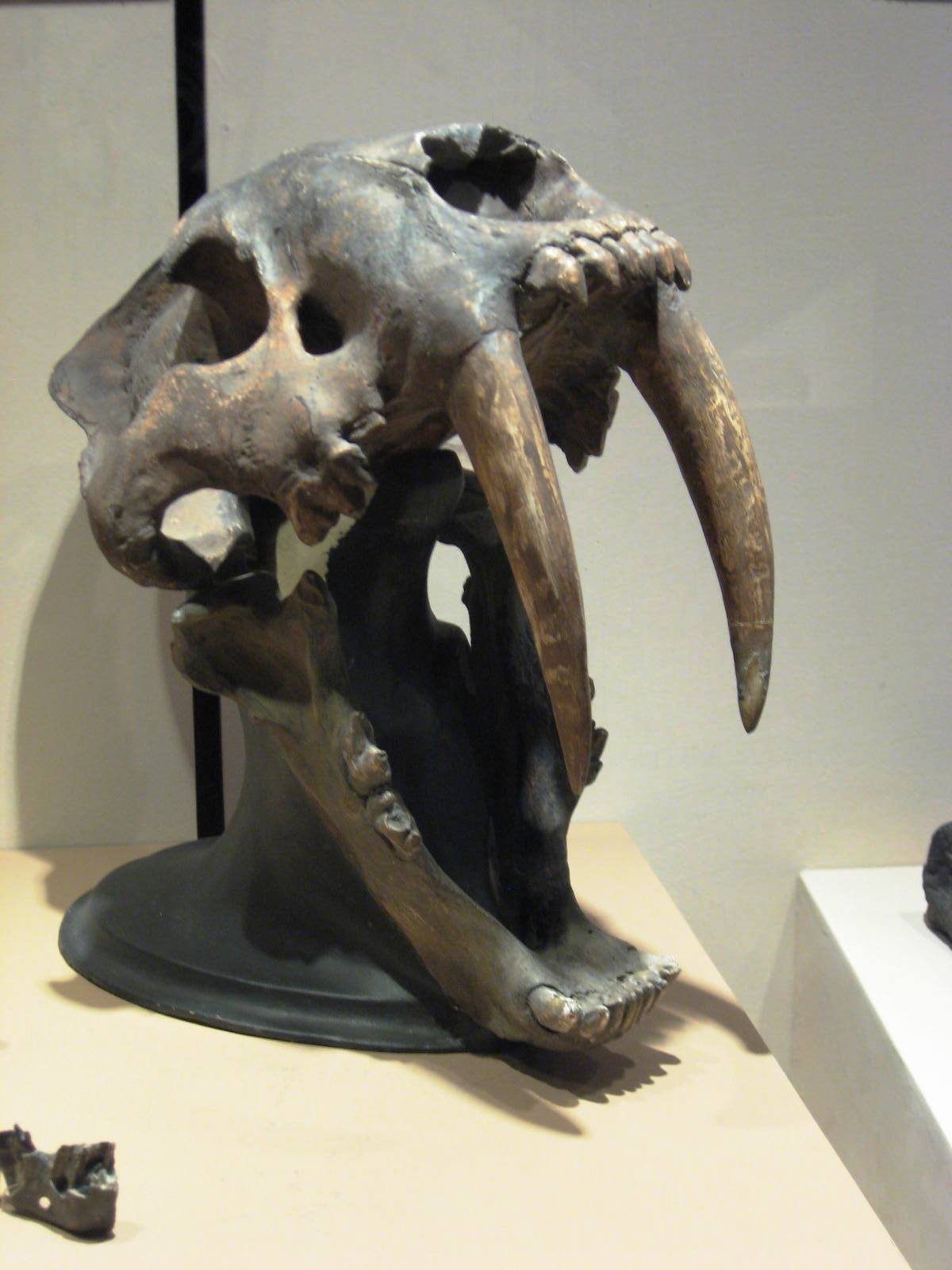
Machairodus giganteus earns its name—it was truly a giant among saber-toothed cats, with some individuals stretching over 10 feet long. Its saber teeth were massive, easily visible even with its mouth closed. This cat roamed Eurasia and Africa, preying on huge animals like ancient elephants and rhinos. Its size and strength made it nearly unstoppable, but also meant it needed a lot of food to survive. Machairodus giganteus shows how saber-tooth evolution could push size and power to the absolute limit—a prehistoric heavyweight champion.
Rhizosmilodon: The Florida Native
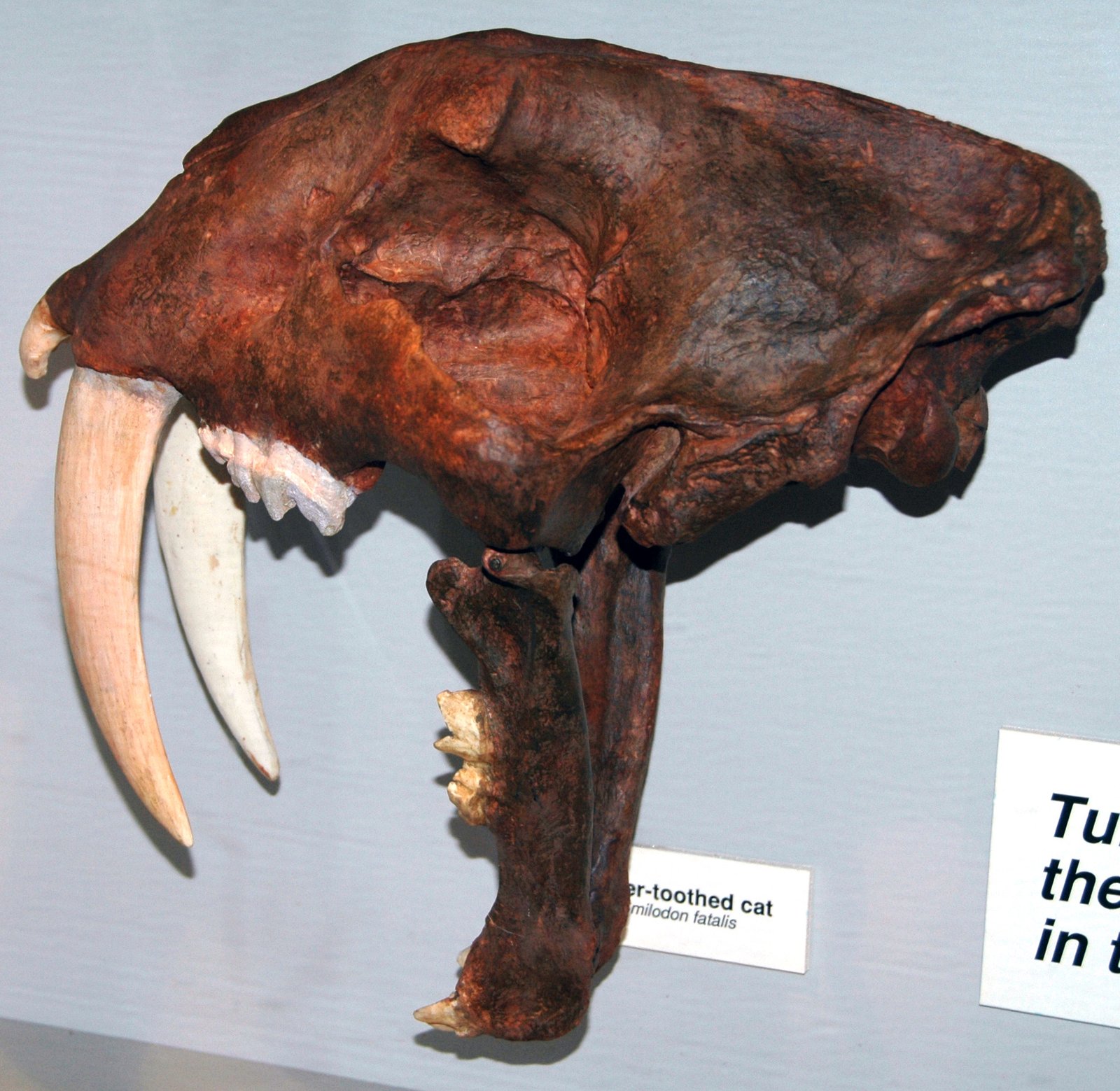
Rhizosmilodon is a lesser-known saber-toothed cat found in what is now Florida. It was smaller than Smilodon but still packed a mean punch with its sharp, curved canines. Fossils suggest Rhizosmilodon hunted smaller prey, perhaps using dense forests for cover. Its teeth were well-suited for gripping and tearing, making it an efficient predator in a world full of competition. Despite its size, Rhizosmilodon was a survivor, adapting to changing climates and landscapes. This cat proves that even in the shadow of giants, small saber-tooths could carve out their own niche.
Nimravides: The Cat Mimic
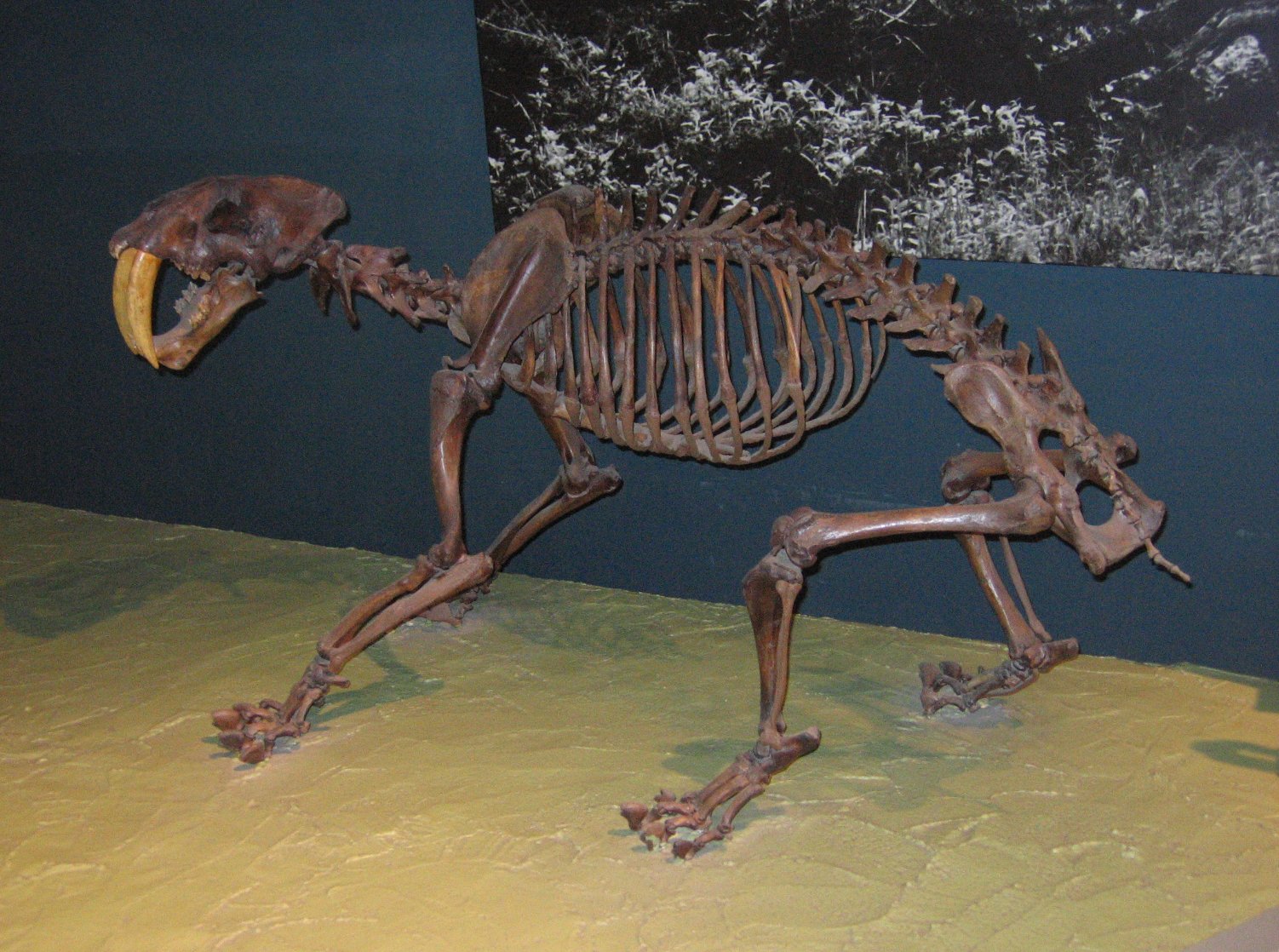
Nimravides wasn’t a true cat, but it sure looked the part. This saber-toothed predator lived in North America and evolved saber-like teeth independently from real felines. Its body plan was cat-like, with a flexible spine and quick reflexes, but its family tree was separate. Nimravides hunted in forests and open woodlands, likely preying on smaller mammals. Its evolutionary story shows how nature can “copy-paste” successful designs, even in unrelated groups. Nimravides is a fantastic example of convergent evolution at work—when different animals solve the same problem with similar answers.
Pogonodon: The Saber-Toothed Oddball

Pogonodon stood out from the saber-toothed crowd with its odd proportions—short legs, a long body, and a narrow skull. This North American predator wasn’t as large as Smilodon, but its saber teeth were still impressive. Pogonodon’s body shape suggests it might have been a stealthy ambusher, lurking in dense undergrowth for the perfect moment to strike. Its teeth were sharp, but not overly long, striking a balance between strength and practicality. With its quirky look and hunting style, Pogonodon proves that saber-tooth adaptations could take many forms.
Dinictis: The Proto-Saber-Tooth
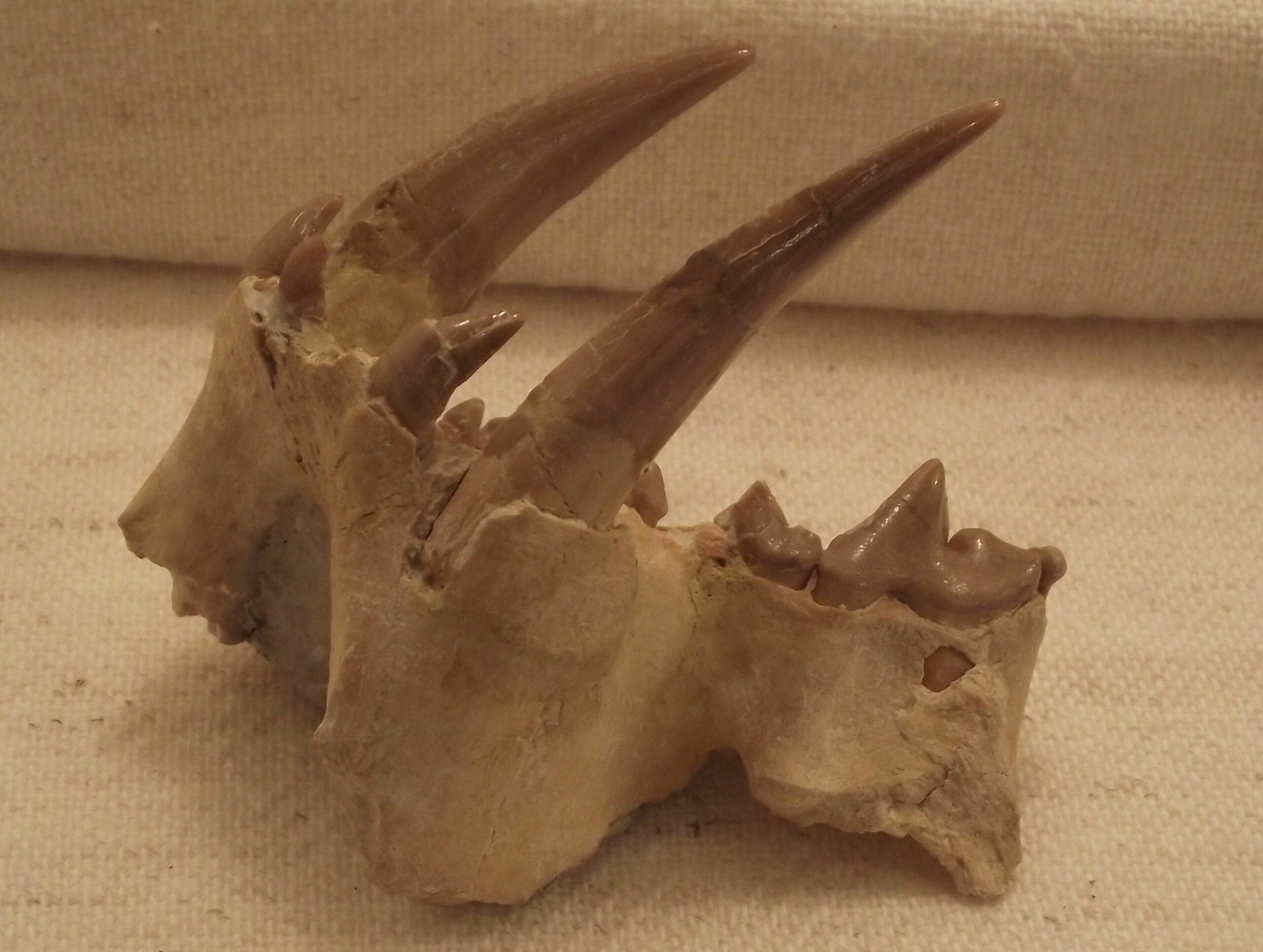
Dinictis is often considered the “prototype” for saber-toothed cats, though it wasn’t a true feline. Living in North America during the late Eocene, Dinictis had slightly elongated canines and a slim, agile build. It hunted small mammals and birds, using stealth and quick strikes to catch its prey. Dinictis’s teeth were a preview of what was to come—nature’s first experiments with the saber-tooth formula. Its success set the stage for bigger, bolder saber-tooths in the ages that followed, proving that even small changes can lead to big evolutionary leaps.
Hoplophoneus: The Early Saber Specialist
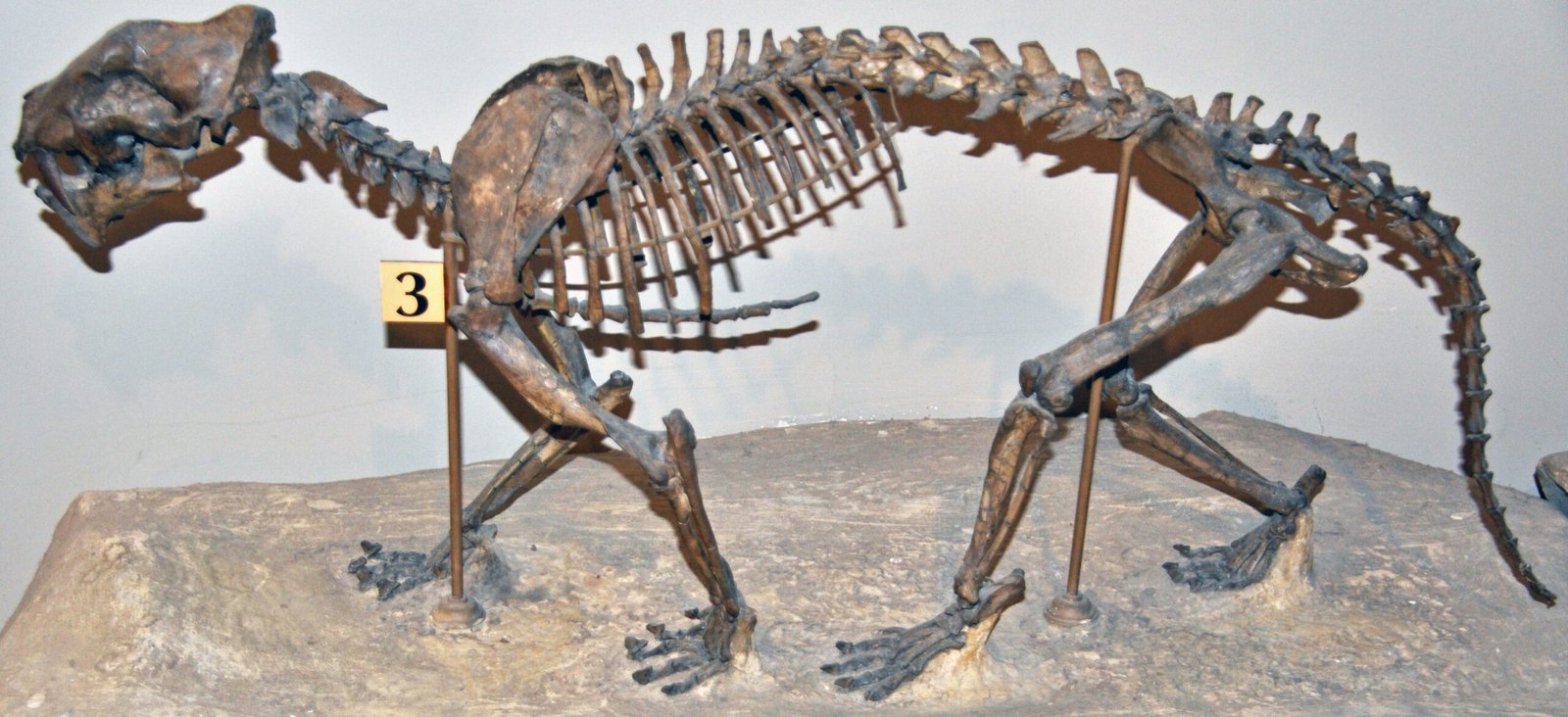
Hoplophoneus was a nimravid, not a true cat, but it had wickedly long saber teeth that could intimidate any predator. This animal lived in North America around 30 million years ago and was one of the first to show how effective saber-teeth could be. Fossils reveal strong jaw muscles and a powerful neck, perfect for delivering deep, fatal bites. Hoplophoneus likely hunted large prey, ambushing them with a quick, deadly attack. Its early adoption of saber-teeth paved the way for future predators to follow. If saber-tooth cats had a founding father, Hoplophoneus would be on the family crest.
Eusmilus: The Elegant Assassin
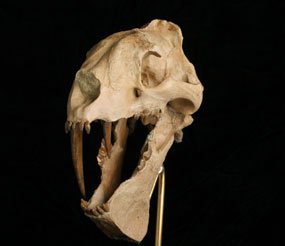
Eusmilus brings a touch of elegance to the saber-toothed lineup. With a slender body, long tail, and gracefully curved saber teeth, this nimravid predator was built for both speed and agility. Eusmilus lived in Europe, Asia, and North America, making it a globe-trotting hunter. Its teeth were so long they almost reached its lower jaw, and it had special flanges to protect them. Eusmilus relied on stealth and quick strikes, often ambushing smaller mammals. Its graceful build and deadly bite made it a true “catwalk” killer—sleek, stylish, and always deadly.
Quercylurus: The Saber-Tooth with a Slink

Quercylurus had a body that was more like a big, slinky ferret than a cat. It lived in Europe during the Oligocene and had modest saber teeth, but its real trick was flexibility. With a long spine and short legs, Quercylurus could twist and turn in ways most predators couldn’t, making it a master of pursuit through dense forests. Its build let it dart after prey in tight spaces where bigger cats would get stuck. Quercylurus shows that saber-tooth hunting wasn’t just about teeth—sometimes, it was about moving like a shadow.
Thylacoleo: The Aussie Saber-Tooth
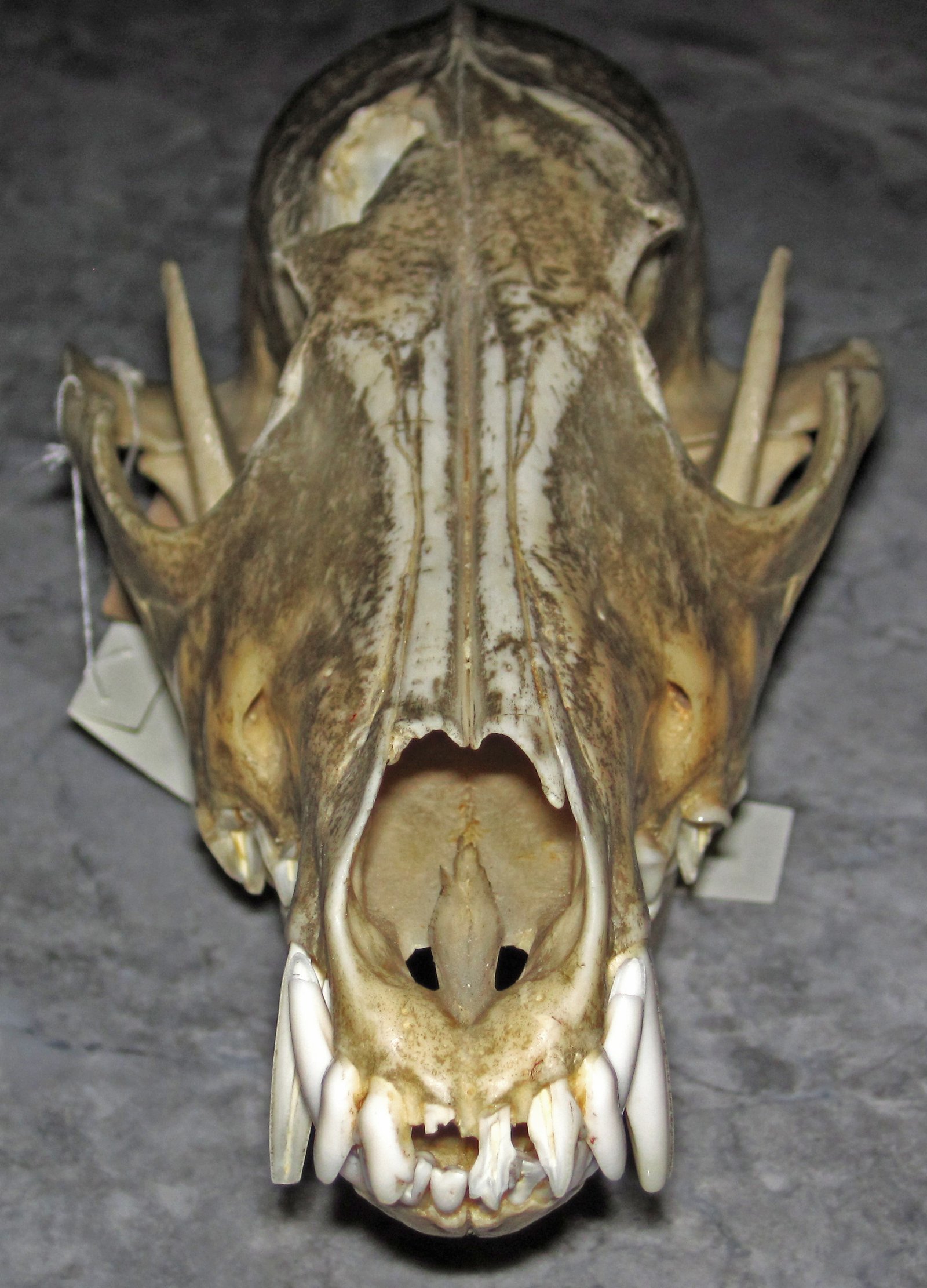
Thylacoleo, the so-called “marsupial lion” of Australia, wasn’t a cat at all, but it evolved saber-like incisors that worked much like those of true saber-tooths. This predator had powerful jaws and a stocky build, making it the top hunter of ancient Australia. Its front teeth were sharp and blade-like, perfect for slicing through tough hides. Thylacoleo’s unique body plan included a semi-opposable thumb, giving it an extra grip on prey. Despite its feline nickname, Thylacoleo is another example of convergent evolution—when nature keeps reinventing the saber-tooth design in new and surprising ways.
Adelphailurus: The Saber-Tooth with a Smile

Adelphailurus was a saber-toothed cat from North America with a name that literally means “brotherly cat.” Its saber teeth were medium-length, but what really stood out was its broad, rounded skull and wide-set mouth—almost like it was always grinning. Adelphailurus likely hunted medium-sized prey, using ambush tactics in forests and woodlands. Its fossils are rare, but its cheerful-looking skull always brings a smile to paleontologists’ faces. Even in the saber-toothed world, it seems there was room for a cat with a bit of personality.
Paramilodon: The Saber-Tooth from the Shadows
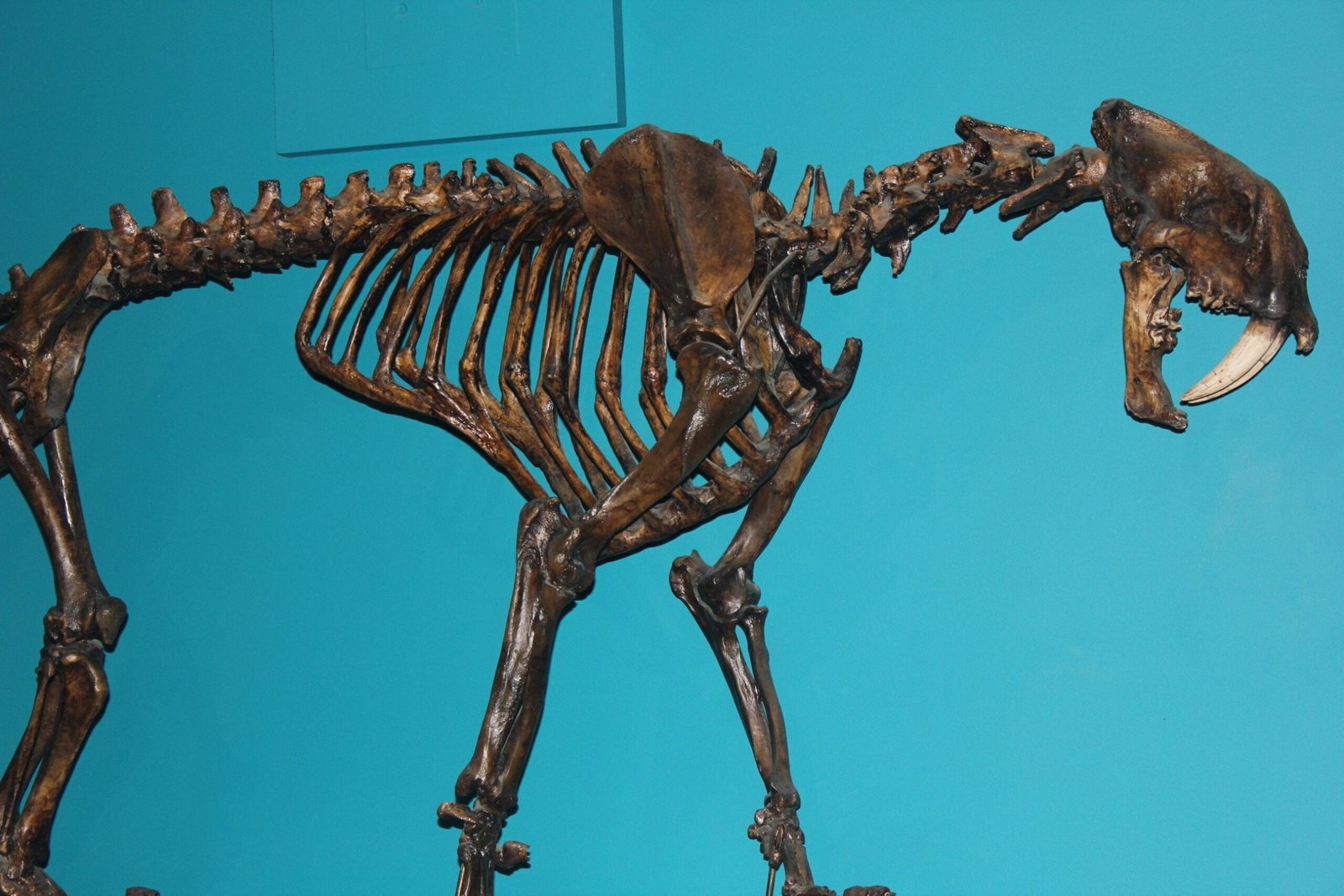
Paramilodon is a mysterious saber-toothed cat from South America, known for its shadowy fossil record. With moderately long canines and a stocky, compact build, Paramilodon likely hunted in forests or scrublands, relying on ambush rather than speed. Its teeth were adapted for gripping and tearing, perfect for dispatching a variety of prey. Though less famous than Smilodon, Paramilodon’s quiet success shows that saber-tooth evolution wasn’t just about size or spectacle—it was about finding the perfect fit for your environment, even if it meant hunting from the shadows.
Taowu: The Chinese Saber-Tooth

Taowu is one of the most recently discovered saber-toothed cats, found in China. With moderately long, flattened canines and a sleek, agile build, Taowu adds a fresh chapter to the saber-tooth story. Its bones suggest it was a skilled predator, hunting in forests and grasslands. Taowu’s discovery highlights how much there is still to learn about these amazing animals—and how saber-tooth evolution kept popping up in the most unexpected places. Even after millions of years, the saber-tooth legacy continues to surprise and inspire.
Which of these wild, saber-toothed cats would you dare to meet face-to-face?

Suhail Ahmed is a passionate digital professional and nature enthusiast with over 8 years of experience in content strategy, SEO, web development, and digital operations. Alongside his freelance journey, Suhail actively contributes to nature and wildlife platforms like Feline Fam, where he channels his curiosity for the Feline into engaging, educational storytelling.
With a strong background in managing digital ecosystems — from ecommerce stores and WordPress websites to social media and automation — Suhail merges technical precision with creative insight. His content reflects a rare balance: SEO-friendly yet deeply human, data-informed yet emotionally resonant.
Driven by a love for discovery and storytelling, Suhail believes in using digital platforms to amplify causes that matter — especially those protecting Earth’s biodiversity and inspiring sustainable living. Whether he’s managing online projects or crafting wildlife content, his goal remains the same: to inform, inspire, and leave a positive digital footprint.






